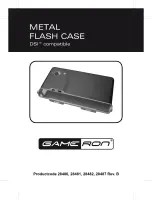
Hydra Super-S3 Introduction
Page 3
1.4.4 Smart Fan
The smart fan automatically regulates the fan speed according to the temperature. When the hard
drives are in stand-by, the fan is turned off. When the drives are in use, the fan runs at low speed
until the temperature reaches 45 degrees. From that point on, the speed increases for every 5
degrees until 60 degrees and then runs at full speed above 61 degrees Celsius.
Status/Temperature
Fan Speed
Stand-by
Off
0-45°
Low speed
46-50°
Medium speed
51-60°
Upper medium speed
61° and above
High speed
1.5 RAID Mode
Depending on the RAID mode, a certain amount of drives are required. It is not possible to add
more drives to an existing RAID array without re-formatting it. To add additional drives at a later
point, turn off the power, install the new drive(s) and then create a new RAID array by confirming
the RAID mode again. This will erase all existing data on the drives!
Note
For a RAID array (e.g. RAID 0, RAID 1, RAID 5), hard drives of identical capacities are
recommended. If the capacity is different, the total amount of the space that can be used will
depend on the drive with the smallest capacity.
1.5.1 Disk Striping (RAID 0)
The drives show up as one large single volume but the total size will depend on the drive with the
smallest capacity. Used where speed is the primary objective but RAID Level 0 (also called striping)
is not redundant. This form of array splits each piece of data across the drives in segments. Since
data is written without parity data-checking, it allows for the fastest data transfer but if one drive
fails, the whole array can become corrupted.
HDD
2, 3 or 4 drives
1.5.2 Disk Mirroring (RAID 1)
The drives show up as one volume but only 50% of the total capacity, depending on the drive with
the smallest capacity, can be used. RAID 1 creates an exact copy (or mirror) of a set of data on the
second drive. This is useful when reliability and backup are more important than capacity. When
one drive fails, it can be replaced and the data rebuilt.
HDD
2 drives
1.5.3 Disk Mirroring with Striping (RAID 10)
The drives show up as one volume but only 50% of the total capacity, depending on the drive with
the smallest capacity, can be used. RAID 1 creates an exact copy (or mirror) of a set of data. This
is useful when reliability and backup are more important than data capacity. When one hard drive
fails, it can be replaced and the data rebuilt automatically.
HDD
4 drives


































